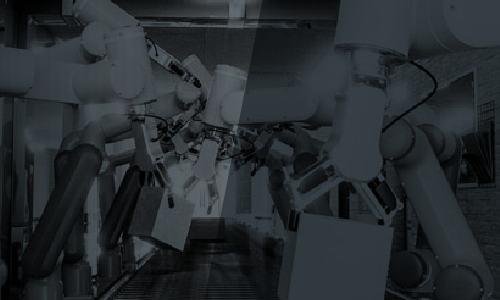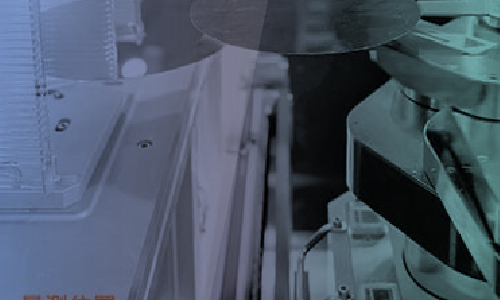Common Issues with Robotic Arms?
Application Field |Robotic ArmsRobotic arms have become widespread across various industries, offering numerous types, movements, and characteristics.
Motivation
Common Issues with Robotic Arms?
Due to the advancement of industrial automation,
robotic arms are widely used in various manufacturing fields.
These devices are automatic control systems that mimic human arm movements
and can perform various tasks autonomously.
Robotic arms come in different shapes and sizes,
with common types including linear arms, SCARA arms, and multi-axis articulated robotic arms.
Structurally, they can be categorized into three-axis and multi-axis models.
Although the basic principles are similar,
the technological differences between these models create clear distinctions in user needs.
The complex construction and motion calculations of robotic arms require a variety of sensors
for monitoring different parts.
However, challenges such as sensor incompatibility with the robotic arm system
often hinder accurate measurements and the collection of reliable data.
Challenges in Implementation
How to Perform Predictive Monitoring for Robotic Arms?
Non-Intrusive Measurement Method
Due to the complex composition of robotic arms,
which consist of a series of interconnected or sliding components,
monitoring can be difficult if the monitoring system is incompatible with the robotic arm system.
In such cases, monitoring cannot be performed effectively.

A truly effective plug-in measurement method should not require system compatibility but instead use adhesive-type sensors to capture signals. For robotic arm monitoring, it is essential to detect motion signals in real time to determine whether a malfunction is likely to occur. This proactive approach helps prevent uncontrollable failures that could impact product quality and ensures that robotic arms operate optimally without generating defects due to unforeseen issues.
Implementation Goals
Monitoring the Robotic Arm Operation Process
# Eliminate Complex Installations and Achieve True Non-Intrusive Measurement
By attaching sensors to specific measurement points on robotic arms,
combined with Gude’s machine learning-based intelligent monitoring system,
measurements can be initiated without extensive installation procedures.
The system’s unique learning capabilities allow users to create characteristic tags
based on experience, and through AI-driven data collection and learning models,
it can accurately identify anomalous patterns.
# Monitor Robotic Arm Status to Prevent Production Line Downtime
Automated production lines are filled with numerous robotic arms,
performing complex and precise tasks, reducing labor costs,
and minimizing human errors.
The more intricate the robotic arm movements,
the higher the precision required, which directly affects production efficiency.
By monitoring the operating status of robotic arms,
most production line abnormalities can be prevented.
# Detect Early Fault Characteristics to Optimize Maintenance Scheduling
Before a robotic arm fails, it often exhibits fault signatures.
By utilizing monitoring equipment, it is possible to determine whether these fault characteristics
will impact production or product quality.
This enables users to decide whether to schedule maintenance and repairs proactively.
# Enable Predictive Maintenance to Prevent Uncontrollable Mechanical Changes
The goal of monitoring robotic arms is not only to track device status and issue real-time alerts,
but also to schedule predictive maintenance based on collected data.
Predictive diagnostics help anticipate mechanical wear and changes,
allowing early intervention to prevent unexpected failures.

Eliminate Complex Installations

Monitor Robotic Arm Status

Detect Early Fault Characteristics

Provide Predictive Maintenance Insights
Implementation
Accurately Monitoring Robotic Arm Operations
Robotic arms are widely used in automotive manufacturing, mold production, electronics processing, and even in agriculture and medical industries. They help humans perform complex and hazardous tasks, reducing labor costs and exposure to dangerous work environments. Since each type of robotic arm has unique structures and characteristics, effective monitoring should be tailored to its specific properties. Currently, vibration measurement remains the most commonly used monitoring method. Additionally, current and temperature measurements can also be utilized to assess the arm’s operational status.
Real-Time Detection of Robotic Arm Motion Signals
The OLVMS®-ML Machine Learning Intelligent Monitoring System features fast execution of learning and calibration of target motion cycles, automatic tracking and recognition, and mechanical characteristic decomposition. It effectively detects real-time robotic arm motion signals. Even minor signal anomalies can be identified in advance, allowing predictive recognition of potential faults. Users can perform early maintenance or adjustments, preventing unexpected failures that may disrupt production lines and cause losses.
VMS-ML Robotic Arm Monitoring System






